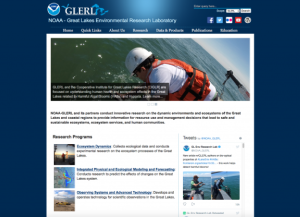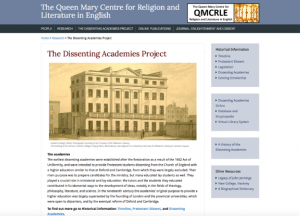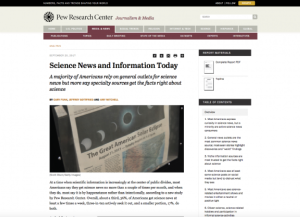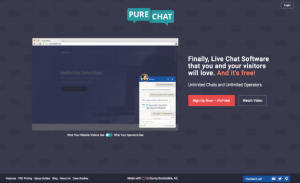Research and Education
Back to Top
|
 |
|
Library of Congress Labs
|
Science |
|
The Library of Congress has recently launched Library of Congress Labs, which is "a place to encourage innovation with Library of Congress digital collections." The LOC lab is intended as a space to collaborate on online projects, share digital tools and visualizations, and stay abreast of digital initiatives that utilize the LOC's collections. As of this write-up, the lab features Beyond Words, a crowdsourced transcription project centering on World War I-era newspapers. This project invites participants to select images (such as illustrations and photographs) from newspapers published across the country and transcribe these images, providing additional insight into the role and nature of national and local newspapers during this time. Meanwhile, the LC for Robots section offers a collection of downloads, software, application programming interfaces (APIs), and tutorials to facilitate visitor engagement in the LOC's digitized collection. Finally, visitors can learn about new digital projects (including projects at the LOC as well as projects headed by other institutions) on The Signal Blog. Fans of this blog can also sign up to receive an email when a new blog post is added. [MMB] |
|





|
|
 |
|
Influenza Encyclopedia
|
Social studies |
|
January 2018 will mark the centennial of the 1918 influenza pandemic, which tragically killed between 50 and 100 million individuals around the globe. The University of Michigan Center for the History of Medicine, in collaboration with the Centers for Disease Control and Prevention, offers this extensive collection of resources and archival material related to influenza in the United States. To do so, the team behind this project selected fifty U.S. cities and researched the impact of the flu in each one and collected archival material from local archives, libraries, and historical societies. For each featured city, visitors will find a short essay summarizing the impacts of the of disease and how medical professionals responded; a timeline of major events; images; and dozens of archival materials, including newspaper clippings and public health bulletins. In addition, in the About this Project section, visitors can access a 2007 article from the Journal of the American Medical Association that examines the non-pharmaceutical interventions that various cities implemented to mitigate the impact of the epidemic, and the relative success of these measures. [MMB] |
|





|
|
 |
|
NOAA Great Lakes Environmental Research Laboratory
|
Science |
|
The Great Lakes Environmental Research Laboratory (GLERL) is a branch of the National Oceanic and Atmospheric Administration (NOAA) dedicated to "conduct[ing] innovative research on the dynamic environments and ecosystems of the Great Lakes and coastal regions to provide information for resource use and management decisions that lead to safe and sustainable ecosystems, ecosystem services, and human communities." Visitors can find a variety of resources on this website related to Great Lake ecosystems - including data, infographics, research summaries and more. One highlight of this page is the Great Lakes Ice Cover, which is accessible under the Quick Links tab. Updated four times a day, this page provides information about ice cover, air temperature, water temperature, cloud cover, surface currents, and more for the Great Lakes. Another highlight is the Great Lakes Aquatic Nonindigenous Species Information System (GLANSIS), which features a fact sheet, an interactive map, and downloadable database about invasive species in the Great Lakes region. Visitors may also want to check out additional resources in the Research, Data & Products, Publications, and Education tabs. [MMB] |
|





|
|
 |
|
 |
|
American Veterans Oral History
|
Social studies |
|
The American Veterans Center offers this powerful collection of videos featuring the stories of veterans who served during the twentieth and twenty-first centuries, including veterans of World War II, the Korean War, and the Iraq War. These videos include interviews with veterans along with recorded readings of veterans' stories by actors including Leslie Odom and Jon Voight. In one video, created in honor of the 70th anniversary of the Battle of Bulge, Lt. Col. James "Maggie" Megellas recalls his combat experiences. His narrative is accompanied by photographs and video clips. In another video, Fernando Rodriguez-Borges describes his service in the "Borinqueneers," a mostly Puerto Rican regiment, during the Korean War. Another video features Sgt. Ivor Griffin, who registered for the Marines at age 17 and served in World War II, the Korean War, and the Vietnam War. Griffin was one of the first African-American individuals to serve in the Marines. While these videos will appeal broadly, they may also be of special interest to social studies instructors. [MMB] |
|





|
|
 |
|
Kindness for Preschoolers
|
Philosophy |
|
The Center for Healthy Minds at the University of Wisconsin has created this free curriculum for early childhood educators centering on the importance of kindness. This curriculum was developed by Lisa Flook, a clinical psychologist at the Center, veteran educator Laura Pinger, and writers, producers, and educators from Sesame Street. It contains 24 lessons and introduces young learners to mindfulness practices, ways to recognize and deal with difficult emotions, how to build connections with others, and more. To receive the Center for Healthy Minds curriculum, users will need to register for a free account. Individual lesson titles in the curriculum include "Emotions change many times a day," "What else can we do when we are upset?" "Forgiving myself," and "Forgiving others." Many of these lessons incorporate short videos or stories, and hyperlinks are provided to view and purchase related materials. [MMB] |
|





|
|
 |
|
Imperial College of London: Mechatronics in Medicine
|
Science |
|
The Imperial College London's Mechatronics in Medicine Laboratory was launched in 1993. Since then, the laboratory has been responsible for innovations in "fields as diverse as neurosurgery, magnetic resonance imaging (MRI) compatible robotics, haptic training systems for surgeons, urological surgery and orthopaedics, high intensity focused ultrasound and blood sampling." On their website, researchers and mechatronic students can learn more about the lab's work and access a number of resources, including news about research developments (in the Research section) and published research papers. Those interested in the latter can conduct a text search for publications by navigating to the Publications tab. Results can be filtered by publication year or type (e.g. book chapter, journal article, conference paper, patent, software). While some publications require certain subscriptions, many of these publications are open-access. [MMB] |
|





|
|
 |
|
The Dissenting Academies Project
|
Social studies |
|
In 1662, the Parliament of England passed the Act of Uniformity - which required adherence to many rites and ceremonies prescribed in the Book of Common Prayer. One of the rites required was episcopal ordination for all ministers. In response, other Protestant religious communities established a number of dissenting academies, which were "intended to provide Protestant students dissenting from the Church of England with a higher education similar to that at Oxford and Cambridge, from which they were largely excluded." This digital humanities project, created by the Queen Mary Centre for Religion and Literature in English, allows visitors to learn more about these academies through an extensive database and encyclopedia of 220 academies that existed between 1660 and 1860. The database also includes thousands of individuals who were involved in the academy as tutors or students, including Joseph Priestley, John Dalton, and Thomas Malthus, among others. In addition, the project also offers a Virtual Library System, which allows visitors to explore the library catalogue of some dissenting academies and even check out the borrowing records of some famous individuals. This project provides additional insight to an important part of British history and will appeal to scholars of history and religion alike. [MMB] |
|





|
|























